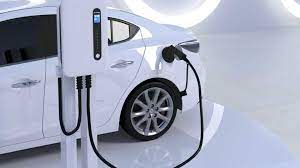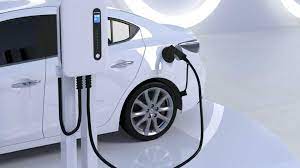
Although the transition to electric vehicles may pose an existential danger to providers of combustion engines, auto parts companies like TE Connectivity face the problem of keeping up with demand.
It creates the connectors that connect miles of wires in automobiles to everything electronic, from sensors to fuel injection systems to infotainment - and if there's one thing electric cars will require, it'll be larger and more complicated connectors.
That's why, in 2020, TE will invest $125 million in a new facility dedicated to electric vehicle (EV) parts in a factory buried away in a shallow valley in the small German town of Woert.
"We're going to continue to add capacity," Chief Executive Terrence Curtin told Reuters, adding that the company is looking for acquisitions or partnerships to keep expanding its auto business.
As legacy suppliers of auto parts decide whether or not to sell combustion engine businesses or buy EV parts makers, TE and competitors in the connectors and sensors industries, such as Sensata Technologies, Amphenol Corp., and Molex, are looking to supply higher-value components and do more development work with carmakers undergoing a massive transition.
"All these automakers talking about moving their fleets to electric and making promises about range are incapable of doing that without suppliers like TE," says William Kerwin, an analyst at Morningstar who covers TE, Sensata and Amphenol.
Over 40 per cent of TE's $15 billion in revenue comes from auto parts, making it one of the largest vehicle suppliers most people have never heard of. Its $43 billion market worth is more than three times that of heavyweight supplier Continental and considerably more than Nissan and Renault combined.
The price-to-earnings ratio for TE is at 18, whereas Amphenol and Sensata are in the 20s, and Continental is around 10.
According to TE's Curtin, car parts suppliers and automakers alike have been caught off guard by an increase in demand for electric vehicles in Europe over the past two years, and as a result of everyone catching up, TE's new factory is producing at twice its intended capacity.
While a global shortage of semiconductors has hampered overall car production, Curtin said manufacturers have been prioritising EVs over fossil fuel vehicles with the chips they do have, putting even greater hardship on suppliers like TE.
Given that the EV transition and shift to self-driving cars could hit speed bumps, such as the termination of subsidies or safety concerns, TE's problem is getting the timing and magnitude of its expansion right, according to Curtin.
Because electrification for TE entails getting bigger.
Because EVs require significantly more power, TE must create larger and more complicated components to accommodate the increased current without creating fires.
TE's traditional parts include up to five components, whilst its newest electric vehicle parts have up to 50.
To make up portions of those larger parts, the supplier now buys tonnes of aluminium, which is lighter and less expensive than copper.
Machines in the Woert factory's older section spew out 16 fossil fuel automobile connectors every second. More complicated and expensive machinery, some supplied by Germany's Manz, produce larger copper connectors with welded alloy springs for EV charge ports at a much slower pace in the new building.
TE also provides a huge connector that sits atop an EV battery module - an EV can have up to 12 - and acts as the vehicle's brain, assessing the performance of each battery cell while a tiny semiconductor detects their temperature.
The new factory in Woert can produce 2 million of these connectors each year, but demand is still high.
"We're going to need more," said Matthias Lechner, TE's head of Europe, Middle East and Africa, adding that TE planned to manufacture more at a plant in Hungary and elsewhere.
(Source:www.reuters.com)
It creates the connectors that connect miles of wires in automobiles to everything electronic, from sensors to fuel injection systems to infotainment - and if there's one thing electric cars will require, it'll be larger and more complicated connectors.
That's why, in 2020, TE will invest $125 million in a new facility dedicated to electric vehicle (EV) parts in a factory buried away in a shallow valley in the small German town of Woert.
"We're going to continue to add capacity," Chief Executive Terrence Curtin told Reuters, adding that the company is looking for acquisitions or partnerships to keep expanding its auto business.
As legacy suppliers of auto parts decide whether or not to sell combustion engine businesses or buy EV parts makers, TE and competitors in the connectors and sensors industries, such as Sensata Technologies, Amphenol Corp., and Molex, are looking to supply higher-value components and do more development work with carmakers undergoing a massive transition.
"All these automakers talking about moving their fleets to electric and making promises about range are incapable of doing that without suppliers like TE," says William Kerwin, an analyst at Morningstar who covers TE, Sensata and Amphenol.
Over 40 per cent of TE's $15 billion in revenue comes from auto parts, making it one of the largest vehicle suppliers most people have never heard of. Its $43 billion market worth is more than three times that of heavyweight supplier Continental and considerably more than Nissan and Renault combined.
The price-to-earnings ratio for TE is at 18, whereas Amphenol and Sensata are in the 20s, and Continental is around 10.
According to TE's Curtin, car parts suppliers and automakers alike have been caught off guard by an increase in demand for electric vehicles in Europe over the past two years, and as a result of everyone catching up, TE's new factory is producing at twice its intended capacity.
While a global shortage of semiconductors has hampered overall car production, Curtin said manufacturers have been prioritising EVs over fossil fuel vehicles with the chips they do have, putting even greater hardship on suppliers like TE.
Given that the EV transition and shift to self-driving cars could hit speed bumps, such as the termination of subsidies or safety concerns, TE's problem is getting the timing and magnitude of its expansion right, according to Curtin.
Because electrification for TE entails getting bigger.
Because EVs require significantly more power, TE must create larger and more complicated components to accommodate the increased current without creating fires.
TE's traditional parts include up to five components, whilst its newest electric vehicle parts have up to 50.
To make up portions of those larger parts, the supplier now buys tonnes of aluminium, which is lighter and less expensive than copper.
Machines in the Woert factory's older section spew out 16 fossil fuel automobile connectors every second. More complicated and expensive machinery, some supplied by Germany's Manz, produce larger copper connectors with welded alloy springs for EV charge ports at a much slower pace in the new building.
TE also provides a huge connector that sits atop an EV battery module - an EV can have up to 12 - and acts as the vehicle's brain, assessing the performance of each battery cell while a tiny semiconductor detects their temperature.
The new factory in Woert can produce 2 million of these connectors each year, but demand is still high.
"We're going to need more," said Matthias Lechner, TE's head of Europe, Middle East and Africa, adding that TE planned to manufacture more at a plant in Hungary and elsewhere.
(Source:www.reuters.com)





